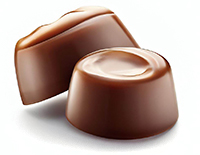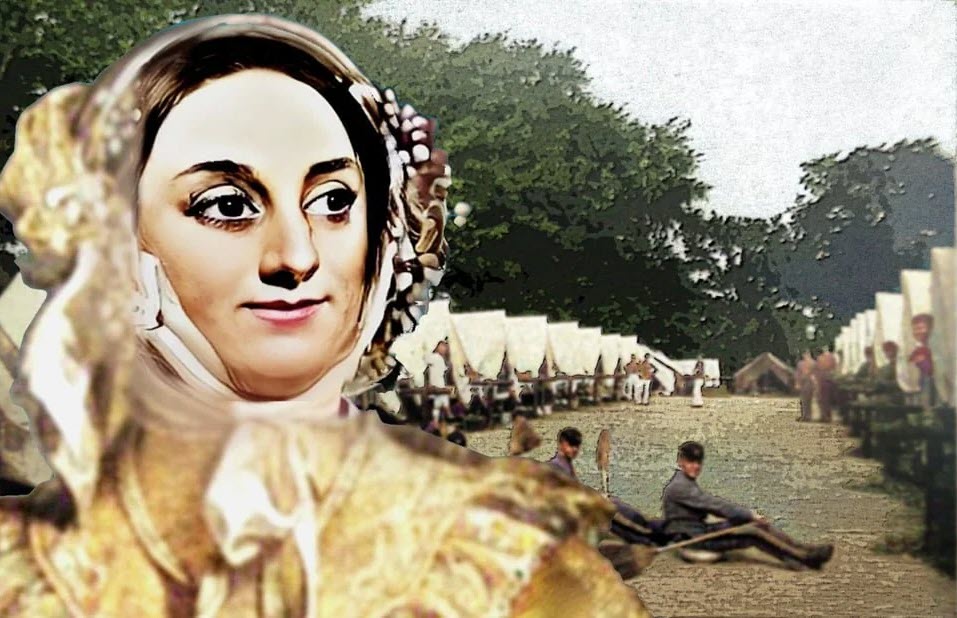The New York Times [NYT] selected a husband-and-wife chef team to create a new dish based upon the Chocolate Caramel recipe [NYT pdf, no subscription necessary] the NYT published in 1881.
“Take of grated chocolate, milk, molasses, and sugar, each on cupful, and a piece of butter the size of an egg; boil until it will harden when dropped into cold water; add vanilla; put in a buttered pan, and before it cools mark off in square blocks. ” — NYT, March 6, 1881
The recipe was signed “–Fanny.” This is before Fannie Merritt Farmer swung her weight around at the Boston Cooking School, so can I assume it was another Fanny. Yes, of course. Here is Fannie Farmer’s Chocolate Caramel recipe using level measurements from her 1906 cookbook. Yet what was the size of a square of chocolate in their kitchens?

Chocolate Caramels
- 2.5 tablespoons butter
- 2 cups molasses
- 1 cup brown sugar
- 1/2 cup milk
- 3 squares chocolate
- 1 teaspoon vanilla
Put butter into kettle; when melted, add molasses, sugar, and milk. Stir until sugar is dissolved, and when boiling-point is reached, add chocolate, stirring constantly until chocolate is melted. Boil until, when tried in cold water, a firm ball may be formed in the fingers. Add vanilla just after taking from fire. Turn into a buttered pan, cool, and mark in small squares. — Fannie Merritt Farmer
What was—what is—the size of a Square of Chocolate?
What was the size of a square of chocolate in the kitchens from 1900? All signs point to an ounce of chocolate. Maria Parloa, for one, wrote in her cookbook, Miss Parloa’s New Cook Book and Marketing Guide—
“The pound packages of Baker’s chocolate consist of two cakes, each of which has eight squares; so one of these squares is an ounce.” — Maria Parloa, 1880
In England, an 1833 source has the ounce as the smallest measurement of chocolate in a recipe unless the cook was to shave the chocolate. The Cook’s Dictionary published in 1833 states the French knew a tablette, cake, or lozenge of Dutch Chocolate [contains sugar] was 1.333 ounces — at least for the chocolate drink. Most of the chocolate recipes in The Cook’s Dictionary required measurements rounded to quarters of a pound, and if less, rounded to the ounce, or shaved chocolate.
There are hundreds or thousands of cookbooks from before circa 2013 that use “the square of chocolate” as a measurement. They all mean an ounce.
In the 2010s, Baker’s chocolate underwent a change in the weight of a square, potentially overlooking the cherished traditions of cookbooks and recipes. The measurement of a square of chocolate has been altered from one ounce to half an ounce, sparking passionate debates among individuals on both sides of the issue. As a historian, it is regrettable to witness the transformation of centuries-old traditions which could confuse present and future cooks who use pre-2010s recipes. Glencoe House Publications offered a US phone number for Baker’s Chocolate 800-431-1001 (current as of December 2013) to help address this shift. Additionally, you may provide feedback on the Baker’s website. While Baker’s chocolate has long been associated with baking, there are alternative suppliers available–although they all may have changed the standard chocolate squares to half an ounce.
